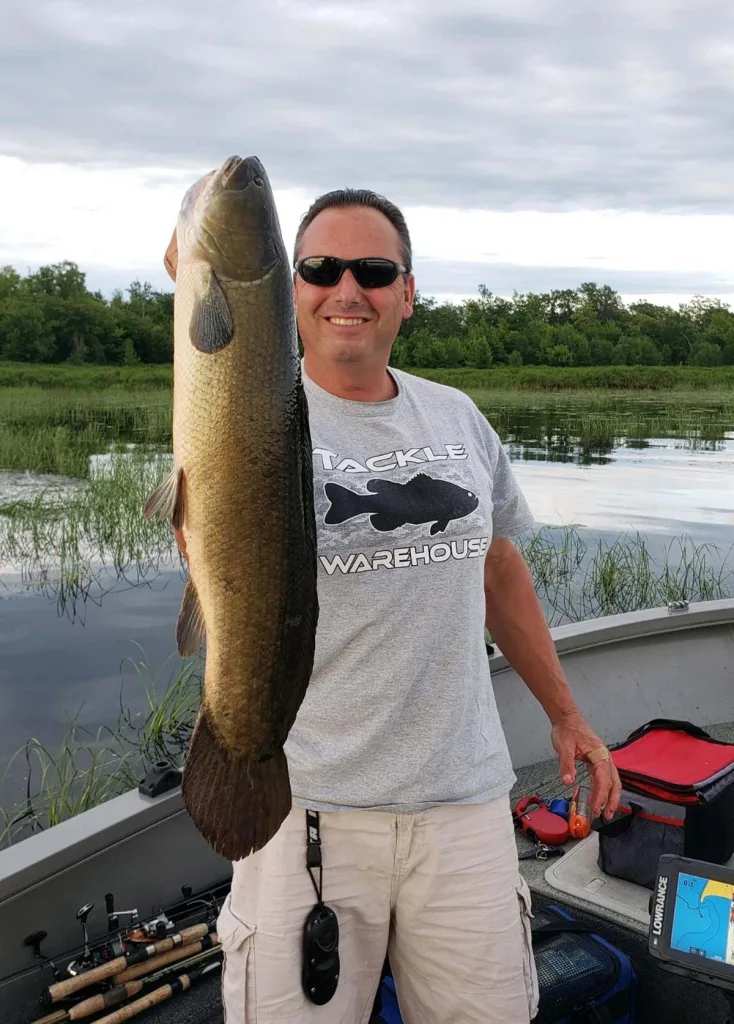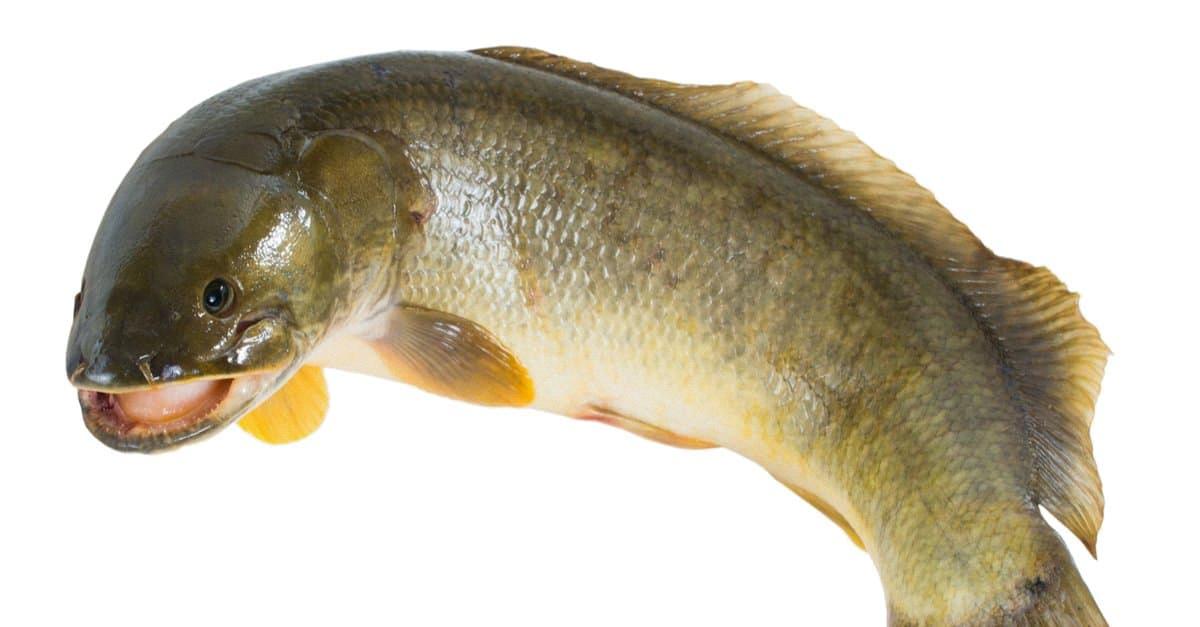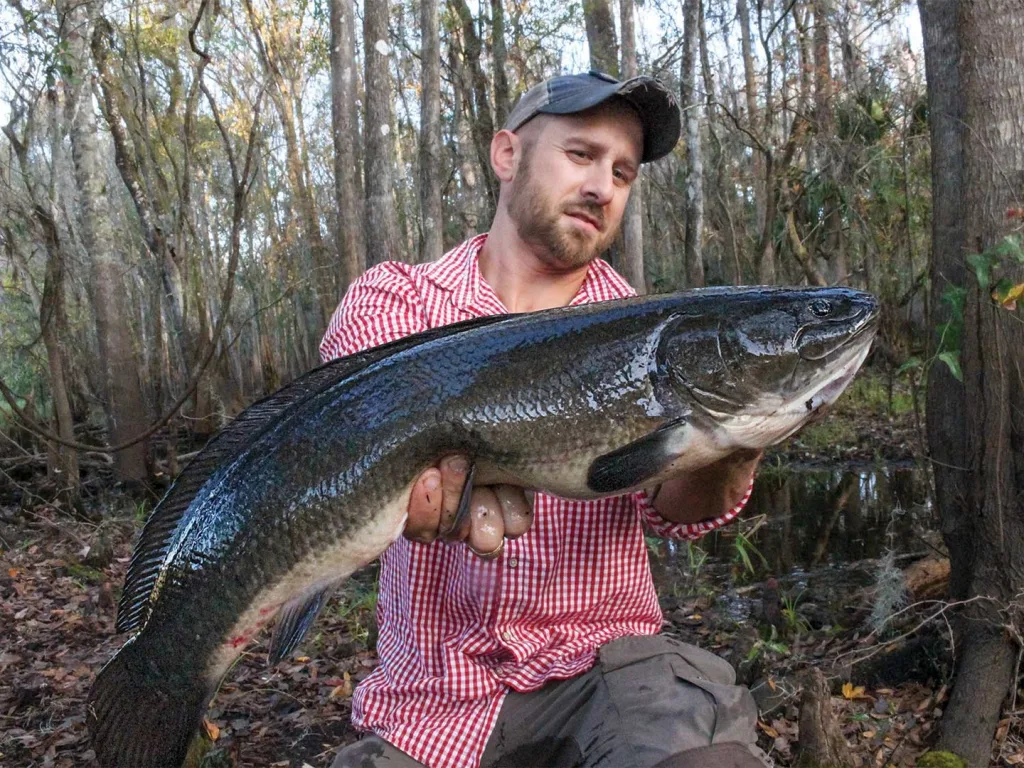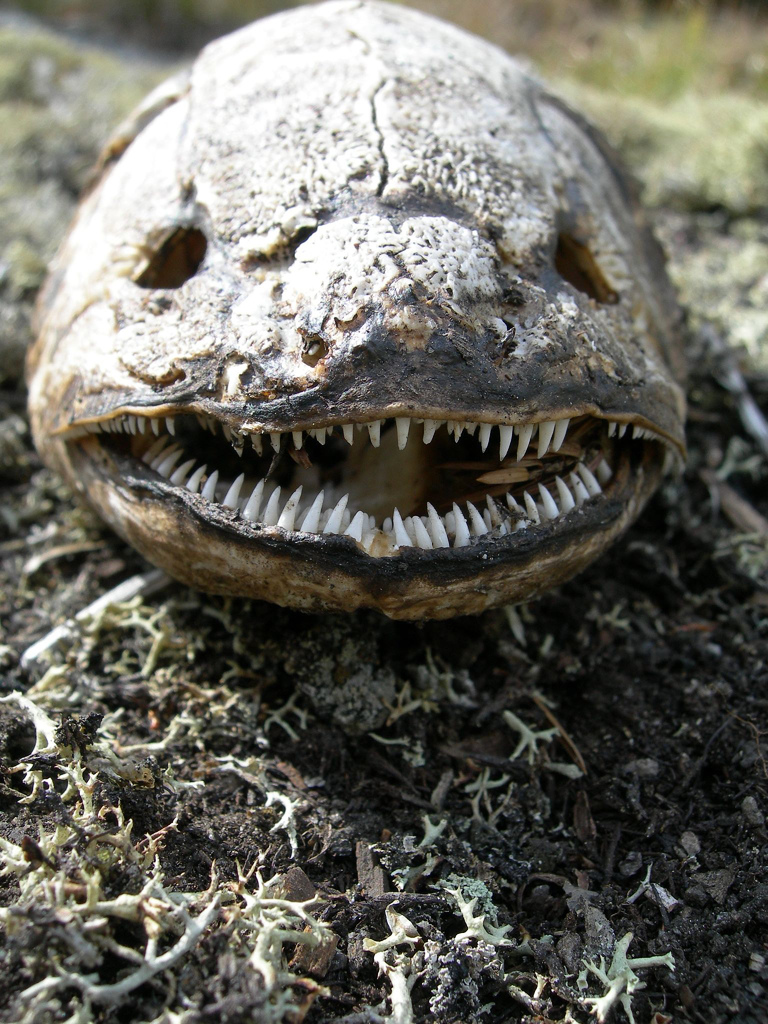Bowfin have an impressive set of teeth that make them one of the fiercest predators in the water. Their sharp, conical teeth are designed to easily tear through their prey, allowing them to quickly and efficiently capture and consume their next meal.
These fish possess a large mouth filled with rows of small but powerful teeth, which are perfect for catching and crushing their prey. The size and shape of the bowfin’s jaw and teeth are ideal for gripping onto slippery or slimy creatures such as crayfish, frogs and other small animals they may encounter while hunting.
The bowfin’s teeth also enable them to effectively feed on larger prey such as fish, birds and even small mammals like muskrats or mink. Their sharp conical shape makes it easier for them to puncture through the flesh of their victims and firmly hold onto them until they are consumed.
In addition to being an important tool for feeding, the bowfin’s sharp teeth also serve as a defense mechanism against potential predators such as larger fish or birds of prey that may try to take advantage of their size or slow speed when swimming. By hving a mouth full of razor-sharp fangs, these fish can ward off any intruders that come too close.
Bowfin are notorious for being aggressive fighters when hooked by anglers, so it is important to be aware of their powerful jaws when attempting to reel one in! It is not uncommon for bowfins to bite down hard on fishing lures in an attempt to free themselves from captivity – a trait that makes them even more difficult (and exciting!) to catch!
Overall, the bowfin’s impressive set of sharp conical teeth make these fish one of nature’s most formidable predators and an exciting challenge for anglers looking for a bit more action on their next fishing trip.
Does the Bowfin Fish Have Teeth?
Yes, a bowfin has teeth. Its mouth is large and equipped with many sharp teeth which are used for catching and consuming prey. The large head of the bowfin does not have scales, but instead has a row of small, razor-sharp teeth lining its jaws. Additionally, the inside of the mouth also contains several rows of small, sharp teeth that help it to grasp and hold onto prey.

Can Bowfin Fish Bite Humans?
No, a bowfin fish will not bite you if you handle it properly and with caution. They are known to be aggressive predators and can be quite scrappy, but they will only attempt to bite you if they feel threatened or are mishandled. As with any fish, it is important to use proper wet hands when handling a bowfin and to avoid poking or prodding them. If the fish is not provoked, it is unlikely that it will attempt to bite you. It is also important to ensure that the bowfin’s environment is well maintained so that it does not beome stressed or agitated.
Is Eating Bowfin Fish a Good Choice?
Bowfin fish, also known as mudfish or grindle, is an underrated fish that is not only great for table fare but also for sportfishing. The flesh of a bowfin is white and flaky, similar to bass, with a mild flavor and firm texture. When prepared properly, it can be a delicious meal.
When preparing bowfin, the most important step is to remove the dark-colored skin and bloodline along the sides of the fillet. This can be done with a sharp knife or by scraping off the skin with your fingers. Once you’ve removed this undesirable part of the fish, you can use any preparation method you like—grilling, baking, pan-frying or steaming—to bring out its delicate flavor.
Bowfin is an excellent source of protein and healthy omega-3 fatty acids. It’s also low in calories, making it a great choice for those trying to watch their weight. With its mild flavor and firm texture, bowfin makes a delicious meal for anyone loking for something new on their dinner plate!
Types of Teeth Found in Bowfin
Bowfin have strong, conical teeth. These teeth are specialized for their diet of small fish, aquatic invertebrates, and amphibians. They feature a sharp point that can be used to puncture and hold onto prey, as well as a wide base to ensure a secure grip. The jaw of the bowfin is adapted to capture and hold its prey with maximum efficiency.
Do Bowfin Have Sharp Teeth?
Yes, the bowfin has small, sharp teeth. Its mouth is large and its teeth are well-suited for gripping and tearing at prey. The sharpness of its teeth also helps it to defend itself from predators. The teeth are arranged in a pattern that allows the bowfin to crush shells and scale off prey items like clams, snails, and crayfish.

Source: a-z-animals.com
The Dislike of Bowfin: An Exploration of Reasons
People often express dislike for bowfin because of their perceived negative impact on sportfish populations. Bowfin are voracious predators, preying on smaller fish and invertebrates, which can include young game fish and game fish food. In some cases, bowfin have been blamed for overpopulating certain areas and reducing the numbers of other fish species. Additionally, their large size (up to 5 feet in length) and aggressive behavior can be intimidating to anglers. Finally, bowfin have an uncommon look compared to other sportfish, which can be off-putting to some people.
Do Bowfin Bites Cause Pain?
Yes, bowfin bites can be painful and even dangerous if proper care is not taken when handling them. Bowfin have a large head and dagger-like teeth that can easily pierce skin. Their powerful jaws and sharp teeth allow them to crush prey, which can leave serious bite marks on an unsuspecting angler. To avoid injury when catching a bowfin, use thick gloves or a wet towel to handle the fish, as this will provide extra protection against their sharp teeth.
Can Bowfin Be Held?
Holding a bowfin is not a recommended practice. These fish have very slimy and soft skin, with no hard spines or structure to grip into. When hooked, they tend to put up an incredibly strong fight and will not slow their movements until the battle has ended. For these reasons, it is best to use a net or hemostats to safely bring the bowfin in for release.
The Benefits of Eating Bowfin
Bowfin are an important part of the aquatic ecosystem, poviding many benefits. They help to keep prey populations in balance, which allows other species of fish to thrive. They also provide food for other fish and wildlife, as well as for humans. Bowfin are an important source of protein for Indigenous communities in some areas, and their roe is highly prized by anglers for bait. Furthermore, bowfin serve as an indicator of water quality since they require well-oxygenated waters to survive. Lastly, bowfin can be an entertaining addition to a home aquarium or pond, providing hours of enjoyment for their owners.

Catching a Bowfin: How Difficult Is It?
Bowfin are a challenging, but rewarding fish to catch. They are oten found in shallow, weedy areas and can be caught using a variety of baits and lures such as worms, crayfish, and small jigs. Bowfin have a very keen sense of smell so the bait should be presented near the bottom or amongst weeds and debris where they are likely to be lurking. Bowfin strike with a lot of force so it is important to have a sturdy rod and line with enough power to land them. They can put up quite a fight and offer an exciting challenge for anglers.
Unique Characteristics of the Bowfin Fish
A bowfin is a unique and fascinating creature that has been around for millions of years. It belongs to the family Amiidae and is commonly referred to as a living fossil due to its primitive features and characteristics. Bowfins are found throuhout the eastern half of North America, primarily in freshwater lakes, rivers, and streams.
What makes a bowfin unique is its combination of primitive body features and more advanced characteristics. It has a lunglike swim bladder which is an adaptation seen in many ancient fish species, while it also has smooth scales which are found more commonly in modern soft-rayed fish. Its long snout with two nostrils also helps distinguish it from other freshwater species. The bowfin’s tail fin is also quite unique; it is longer than other fish and shaped like a crescent moon.
The combination of these features makes the bowfin truly one-of-a-kind!
Are Bowfins Dinosaurs?
No, a bowfin is not a dinosaur. A bowfin is a type of fish belonging to the family Amiidae and is found in freshwater habitats throughout much of the eastern United States and Canada. It is the only living species in its genus and has been around since prehistoric times, making it an ancient species of fish. Bowfins have many unique characteristics that distinguish them from other fish, such as their large size and elongated bodies, armored scales, long dorsal fins and forked tails. They are also able to survive for extended periods outside of water by uing their specialized gills to absorb oxygen from moist surfaces or damp ground.
Record-Breaking Bowfin Catch
The biggest bowfin ever caught weighed in at an impressive 21 pounds 8 ounces, and was caught by Robert L. Harmon in Forest Lake, South Carolina on January 29, 1980. This amazing feat has been recognized by the Fresh Water Fishing Hall of Fame and is officially the all tackle world record for bowfin catches.
How Long Can Bowfin Survive Out of Water?
Bowfin, also known as Amia calva, are an exceptionally hardy species of fish that can survive out of water for prolonged periods. Studies have found that Bowfin can live up to 21 days when buried in mud from a dried-up pond. Additionally, Bowfin will survive for several hours in moist conditions or out of water completely. Therefore, it is safe to conclude that Bowfin are capable of living out of water for multiple days at a time.
Are Bowfin and Snakehead Fish the Same?
No, a bowfin and a snakehead are not the same. Bowfin (Family Amiidae) are native to Texas and are not considered a prohibited species in the state. Snakeheads (Family Channidae), on the other hand, are prohibited species in Texas and are not native to the region. While both species have similar features, such as an elongated body and large mouth, they are not related. Snakeheads have a long dorsal fin with multiple spines and spots on their body, while Bowfin typically have a single dorsal fin with no spots. Additionally, Snakeheads can breathe air and can survive out of water for short periods of time, whreas Bowfin require water to survive.

Conclusion
The bowfin is a fierce predator with strong, conical teeth that can do serious damage. These teeth are an essential tool for the bowfin to feed on its prey, primarily of crustaceans and other small fish. With its large size and powerful jaws, the bowfin is capable of taking down large prey. Although they are not typically sought after as gamefish, they can make for excellent table fare when prepared properly. The bowfin’s formidable teeth should be respected by anglers and the general public alike, as they can cause injury if handled without caution.
